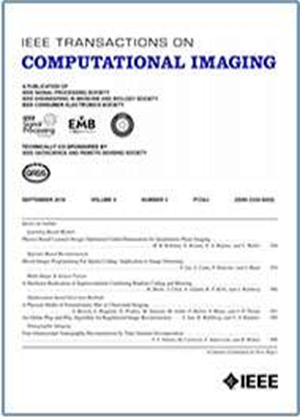High-Throughput Decomposition-Inspired Deep Unfolding Network for Image Compressed Sensing
IF 4.8
2区 计算机科学
Q2 ENGINEERING, ELECTRICAL & ELECTRONIC
引用次数: 0
Abstract
Deep Unfolding Network (DUN) has achieved great success in the image Compressed Sensing (CS) field benefiting from its great interpretability and performance. However, existing DUNs suffer from limited information transmission capacity with increasingly complex structures, leading to undesirable results. Besides, current DUNs are mostly established based on one specific optimization algorithm, which hampers the development and understanding of DUN. In this paper, we propose a new unfolding formula combining the Approximate Message Passing algorithm (AMP) and Range-Nullspace Decomposition (RND), which offers new insights for DUN design. To maximize information transmission and utilization, we propose a novel High-Throughput Decomposition-Inspired Deep Unfolding Network (HTDIDUN) based on the new formula. Specifically, we design a powerful Nullspace Information Extractor (NIE) with high-throughput transmission and stacked residual channel attention blocks. By modulating the dimension of the feature space, we provide three implementations from small to large. Extensive experiments on natural and medical images manifest that our HTDIDUN family members outperform other state-of-the-art methods by a large margin. Our codes and pre-trained models are available on GitHub to facilitate further exploration.基于高通量分解的图像压缩感知深度展开网络
深度展开网络(Deep展开Network, DUN)由于其良好的可解释性和性能,在图像压缩感知(CS)领域取得了巨大的成功。然而,现有的DUNs信息传输能力有限,且结构日益复杂,导致效果不佳。此外,目前的DUN大多是基于一种特定的优化算法建立的,这阻碍了DUN的发展和理解。本文提出了一种结合近似消息传递算法(AMP)和范围-零空间分解(RND)的新的展开公式,为DUN设计提供了新的见解。为了最大限度地提高信息的传输和利用,我们提出了一种基于新公式的新型高通量分解启发深度展开网络(HTDIDUN)。具体来说,我们设计了一个强大的零空间信息提取器(NIE),具有高吞吐量传输和堆叠的剩余信道注意块。通过调节特征空间的维度,我们提供了从小到大的三种实现。在自然和医学图像上进行的大量实验表明,我们的HTDIDUN家族成员在很大程度上优于其他最先进的方法。我们的代码和预训练模型可以在GitHub上获得,以方便进一步探索。
本文章由计算机程序翻译,如有差异,请以英文原文为准。
求助全文
约1分钟内获得全文
求助全文
来源期刊

IEEE Transactions on Computational Imaging
Mathematics-Computational Mathematics
CiteScore
8.20
自引率
7.40%
发文量
59
期刊介绍:
The IEEE Transactions on Computational Imaging will publish articles where computation plays an integral role in the image formation process. Papers will cover all areas of computational imaging ranging from fundamental theoretical methods to the latest innovative computational imaging system designs. Topics of interest will include advanced algorithms and mathematical techniques, model-based data inversion, methods for image and signal recovery from sparse and incomplete data, techniques for non-traditional sensing of image data, methods for dynamic information acquisition and extraction from imaging sensors, software and hardware for efficient computation in imaging systems, and highly novel imaging system design.
 求助内容:
求助内容: 应助结果提醒方式:
应助结果提醒方式:


